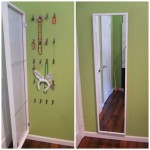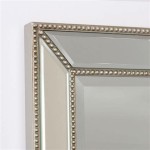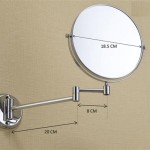Screen Mirroring iPad to Samsung TV: A Comprehensive Guide
Screen mirroring has become an increasingly valuable tool for both personal and professional use. It allows users to wirelessly project the display of their iPad onto a larger screen, such as a Samsung TV. This functionality enhances the viewing experience for movies, presentations, gaming, and various other applications. The process of screen mirroring involves establishing a connection between the iPad and the Samsung TV, which can be achieved through several different methods, each with its own set of advantages and disadvantages.
This article provides a detailed guide on how to successfully screen mirror an iPad to a Samsung TV, outlining the necessary prerequisites, step-by-step instructions, and troubleshooting tips to ensure a seamless experience. The methods discussed include using AirPlay, third-party applications, and physical connections with adapters.
Understanding Compatibility and Prerequisites
Before attempting to screen mirror an iPad to a Samsung TV, it is essential to ensure compatibility and meet certain prerequisites. Compatibility issues can arise due to differences in operating systems, software versions, and hardware limitations. Meeting the prerequisites will significantly streamline the process and minimize potential problems.
Firstly, it is crucial to verify that both the iPad and the Samsung TV support screen mirroring. Most modern Samsung Smart TVs manufactured after 2018 support AirPlay 2, Apple's proprietary wireless screen mirroring technology. To check if a Samsung TV supports AirPlay 2, navigate to the TV's settings menu and look for the AirPlay option. If the option is present, the TV is AirPlay 2 compatible. It is advisable to ensure the TV's software is updated to the latest version to guarantee optimal performance and compatibility.
On the iPad side, AirPlay is supported on iPad models running iOS 11 or later. To check the iOS version, go to Settings > General > About. The software version will be displayed under the "Version" field. If the iPad is running an older version of iOS, it should be updated to the latest version to ensure compatibility with AirPlay 2. The update can be done by connecting the iPad to the power and Wi-Fi, then going to Settings > General > Software Update.
Secondly, both the iPad and the Samsung TV must be connected to the same Wi-Fi network. This is a fundamental requirement for wireless screen mirroring using AirPlay or third-party applications. Ensure that both devices are connected to a stable and reliable Wi-Fi network to prevent interruptions during the mirroring process. A strong Wi-Fi signal is particularly important for streaming high-definition content.
Thirdly, certain settings on the Samsung TV may need to be adjusted to enable screen mirroring. Navigate to the TV's settings menu and locate the AirPlay settings. Ensure that AirPlay is turned on and configured to allow connections from the iPad. Some TVs may require a passcode for AirPlay connections, which will be displayed on the TV screen and need to be entered on the iPad during the connection process.
Screen Mirroring via AirPlay
AirPlay is the most straightforward and reliable method for screen mirroring an iPad to a Samsung TV, provided that both devices are compatible with AirPlay 2. This technology offers a seamless and high-quality mirroring experience with minimal latency.
The initial step is to ensure that both the iPad and the Samsung TV are connected to the same Wi-Fi network, as previously emphasized. Proceed to open the Control Center on the iPad. This can be done by swiping down from the top-right corner of the screen on iPad models without a Home button, or swiping up from the bottom edge of the screen on models with a Home button.
Within the Control Center, locate and tap on the "Screen Mirroring" icon. A list of available devices that support AirPlay 2 will appear. Select the Samsung TV from the list. The TV's name should be clearly displayed, usually in the format "Samsung TV [Model Number]".
Upon selecting the Samsung TV, a passcode may appear on the TV screen. Enter this passcode on the iPad when prompted. This security measure ensures that only authorized devices can connect to the TV. Once the passcode is entered correctly, the iPad's screen will be mirrored onto the Samsung TV.
To adjust the display settings, such as aspect ratio and zoom, navigate to the TV's picture settings menu. The options available may vary depending on the TV model. For optimal viewing, select the "Screen Fit" or "16:9" aspect ratio. Sound settings can also be adjusted to ensure that audio is played through the TV's speakers rather than the iPad's speakers.
To stop screen mirroring, reopen the Control Center on the iPad, tap on the "Screen Mirroring" icon, and select "Stop Mirroring". This will disconnect the iPad from the Samsung TV, and the TV will return to its previous input source.
Utilizing Third-Party Applications
If AirPlay is not an option, either due to compatibility issues or personal preference, several third-party applications can be used to screen mirror an iPad to a Samsung TV. These applications often provide additional features, such as remote control functionality, file sharing, and screen recording.
One popular application is "AirBeamTV". It is available for download from the App Store and offers screen mirroring capabilities without requiring Apple TV or AirPlay. The application works by installing a corresponding receiver app on the Samsung TV, which can be found in the Samsung Apps store. Once both applications are installed, they can be paired to establish a screen mirroring connection.
Another option is "Reflector". This application mirrors the iPad screen to a computer, which can then be connected to the Samsung TV via HDMI. While this method requires an additional device, it can be useful if direct screen mirroring is not possible. Reflector supports AirPlay, Google Cast, and Miracast, providing flexibility in terms of device compatibility.
When using third-party applications, it is essential to consider privacy and security implications. Ensure that the application is from a reputable developer and has positive reviews. Read the application's privacy policy to understand how data is collected and used. Avoid applications that request excessive permissions or collect sensitive information.
The setup process for third-party applications may vary, but generally involves installing the application on both the iPad and the Samsung TV, pairing the devices, and adjusting the mirroring settings. Refer to the application's documentation for specific instructions. Be aware of potential limitations, such as reduced image quality, increased latency, and compatibility issues with certain applications.
Connecting via HDMI Adapter
For a wired connection, an HDMI adapter can be used to connect the iPad directly to the Samsung TV. This method provides a stable and reliable connection with minimal latency, making it suitable for gaming and other applications that require real-time responsiveness.
The specific type of HDMI adapter required depends on the iPad model. iPads with a Lightning port require a Lightning to HDMI adapter, while newer iPad Pro models with a USB-C port require a USB-C to HDMI adapter. These adapters are readily available from Apple and third-party manufacturers.
Connect the HDMI adapter to the iPad's Lightning or USB-C port and then connect an HDMI cable from the adapter to an HDMI port on the Samsung TV. Switch the TV's input source to the corresponding HDMI port. The iPad's screen should now be mirrored onto the TV.
The advantage of using an HDMI adapter is the direct connection it provides, eliminating the need for Wi-Fi and reducing the risk of interference. It also provides a higher-quality image and audio compared to wireless mirroring methods. However, the wired connection limits mobility and requires an additional cable and adapter.
Consider the limitations of this approach. Some streaming services may block playback when an HDMI adapter is used, due to digital rights management (DRM) restrictions. This is aimed at preventing unauthorized copying of copyrighted content. Check the compatibility of specific streaming services before relying on an HDMI connection.
Troubleshooting Common Issues
Despite following the instructions carefully, users may encounter issues when screen mirroring an iPad to a Samsung TV. Common problems include connection failures, poor image quality, audio issues, and latency.
If the iPad fails to connect to the Samsung TV via AirPlay, ensure that both devices are connected to the same Wi-Fi network and that AirPlay is enabled on the TV's settings menu. Restart both the iPad and the TV. Reset the network settings on the iPad by going to Settings > General > Reset > Reset Network Settings. Update the software on both devices to the latest version. In some cases, interference from other wireless devices may disrupt the connection. Try moving the iPad and TV closer to the Wi-Fi router or disabling other wireless devices.
Poor image quality can be caused by a weak Wi-Fi signal or incompatible settings. Ensure that the Wi-Fi signal is strong and stable. Adjust the TV's picture settings to optimize the image quality. Try different resolutions and aspect ratios. If using a third-party application, check the application's settings for options to improve image quality.
Audio issues, such as no sound or distorted sound, can be resolved by adjusting the TV's audio settings. Ensure that the correct audio output device is selected. Check the volume levels on both the iPad and the TV. If using AirPlay, make sure that the audio is being routed to the TV's speakers rather than the iPad's speakers. Restarting both devices can also resolve audio glitches.
Latency, or lag, can be a problem when screen mirroring, especially for gaming and other real-time applications. A wired connection via HDMI adapter typically provides the lowest latency. If using AirPlay or a third-party application, try closing other applications on the iPad to free up resources. Reduce the distance between the iPad and the TV to improve the Wi-Fi signal strength. Consider upgrading to a faster Wi-Fi router.
If the TV displays a black screen or an error message, check the HDMI cable and adapter for any damage or loose connections. Try a different HDMI port on the TV. Use a different HDMI cable to rule out a faulty cable. If the problem persists, the adapter may be faulty and need to be replaced.
When using third-party applications, consult the application's documentation or support resources for troubleshooting tips. Contact the application developer for assistance if needed.

Top 4 Methods To Mirror Ipad Samsung Tv

How To Mirror An Ipad A Samsung Tv

How To Mirror An Ipad A Samsung Tv

Top 4 Methods To Mirror Ipad Samsung Tv

Ipad Screen Mirroring Not Working Quick Solutions Here

How To Mirror Ipad Iphone Samsung Tv

How To Screen Mirror Ipad Mini 2024 Model With Samsung Smart Tv

How To Mirror An Ipad A Samsung Tv

How To Screen Mirroring Iphone Samsung Tv

How To Screen Mirror Iphone Ipad Any Smart Tv Samsung Lg Sony Roku Fire Hisense Tcl







